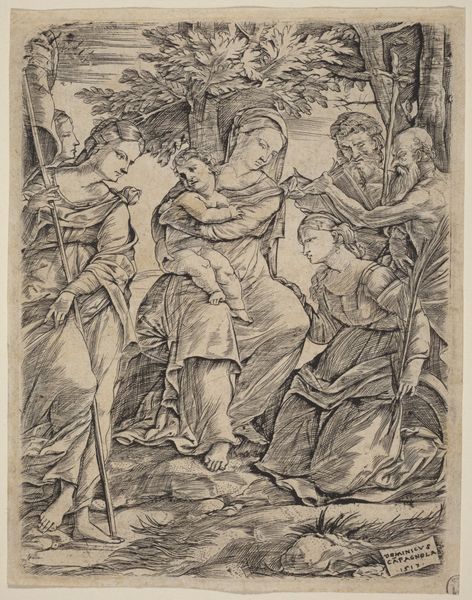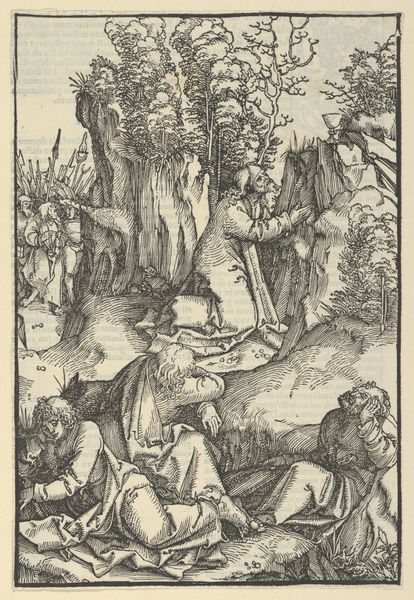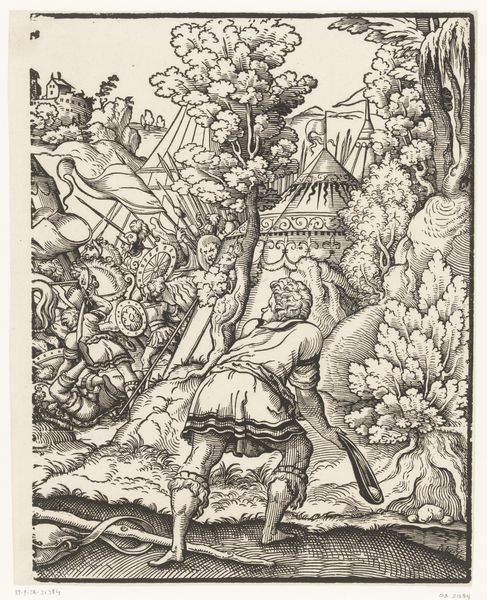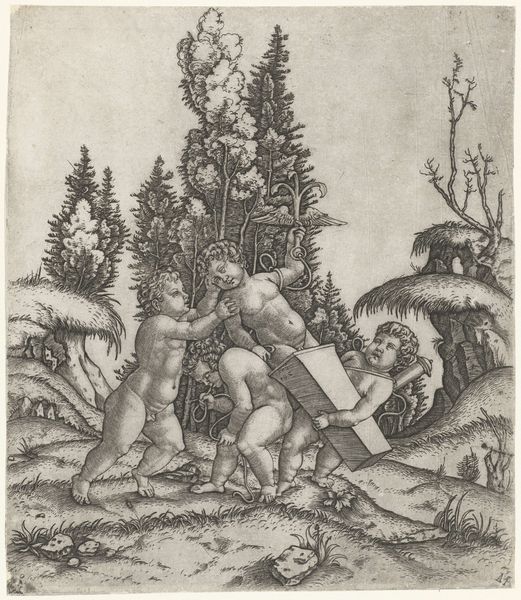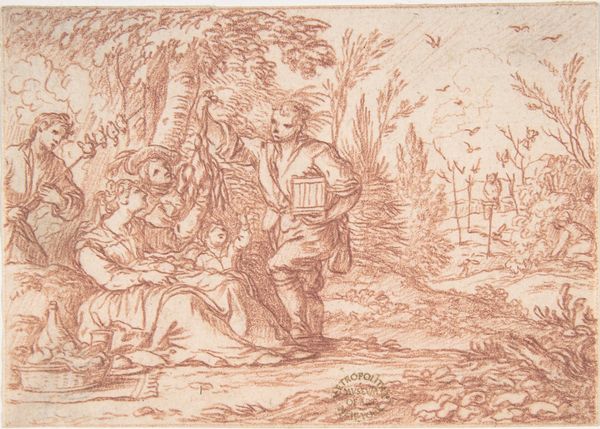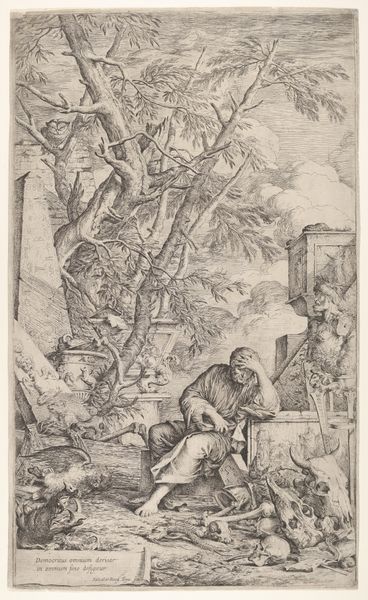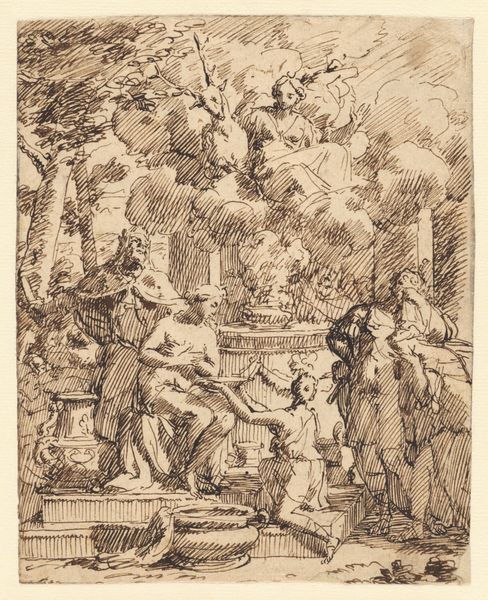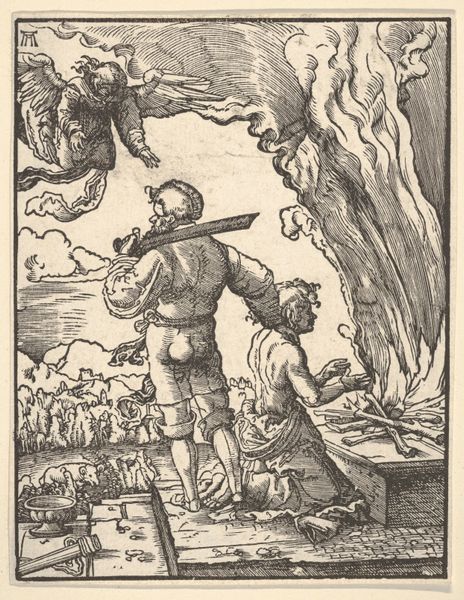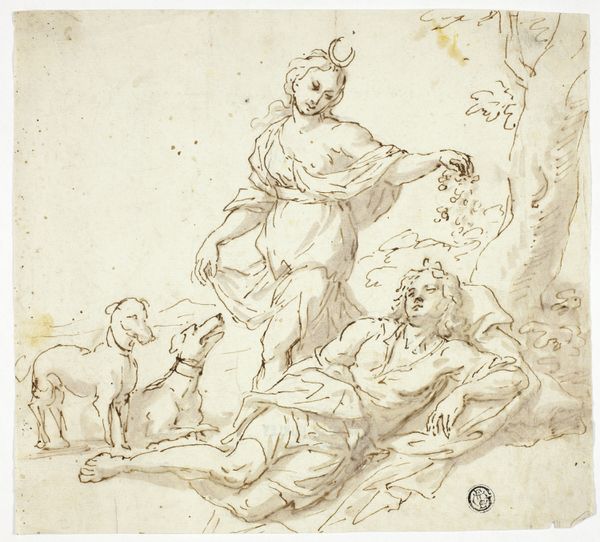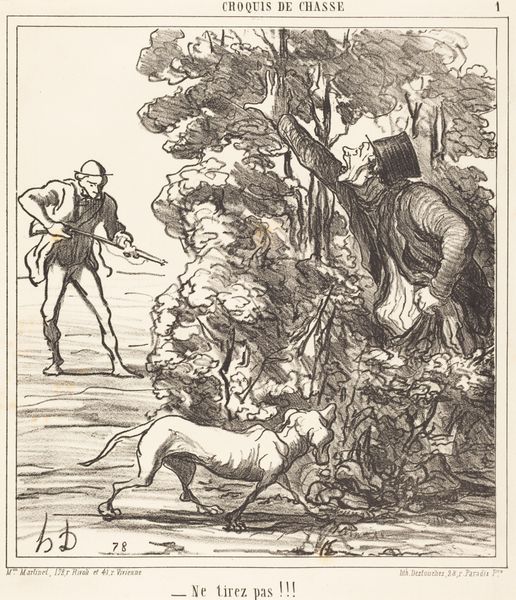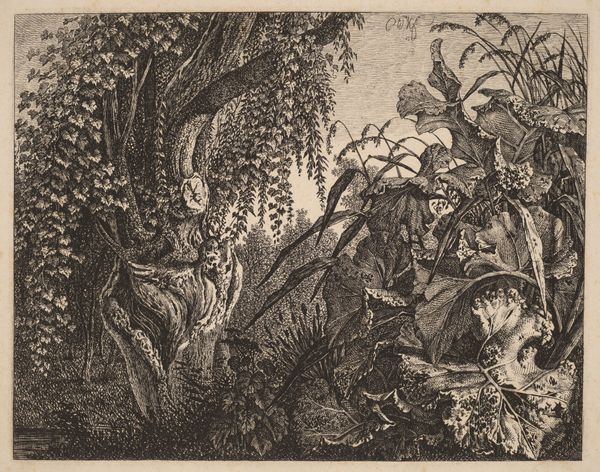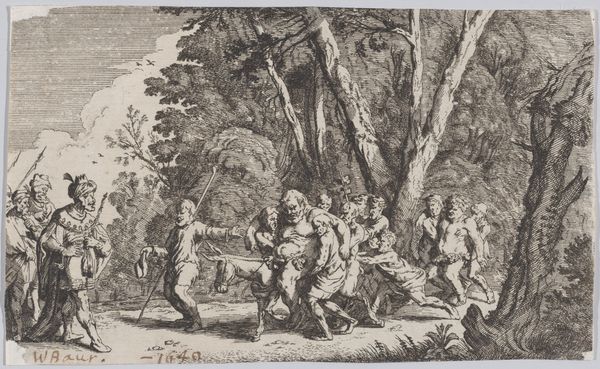
drawing, paper, ink
#
drawing
#
baroque
#
figuration
#
paper
#
ink
#
history-painting
#
academic-art
Dimensions: sheet: 35.5 x 26.5 cm (14 x 10 7/16 in.) mount: 43.4 x 34.2 cm (17 1/16 x 13 7/16 in.)
Copyright: National Gallery of Art: CC0 1.0
Curator: Here we have Luca Cambiaso’s "Charity," a pen and ink drawing on paper from the 17th century. What strikes you first about it? Editor: An immediate feeling of lightness despite the subject matter. The brown ink gives it an antique feeling, and the flowing lines a sense of constant motion and transformation. The use of negative space is particularly effective, creating depth and dimension in a seemingly simple composition. Curator: Indeed. Cambiaso employs rapid, almost calligraphic strokes. The subject, "Charity," aligns perfectly with iconographic conventions. The mother figure, swathed in fabric, literally embodies benevolence, her embrace offering sustenance and protection. What is fascinating to me are the children. Some cling to her, while others daringly ascend a symbolic tree, perhaps seeking further opportunities. Editor: Yes, the dynamism is key. The figures are intertwined, creating a pyramidal structure that's very Baroque. But consider how the texture created by the repeated lines invites closer inspection, drawing the eye into a complex visual field where the figures emerge. This technique almost feels architectural. Curator: That echoes Cambiaso's wider interest in form, as evidenced by the solid geometric structures which underpin his work, which makes this drawing interesting given it relies on ink and fluid movement to communicate structure. Look how it builds upon Renaissance ideals of maternal virtue while signaling the Baroque interest in imbuing paintings with emotional power. Editor: And that contrast is what keeps my interest: the balance between the emotional content suggested by the icon and the technical approach employed to construct it. I almost don't need to understand the meaning to get the feeling; it resides in the very shapes and textures. Curator: Absolutely. It shows that these allegories are designed to not simply present abstract values; it encourages viewers to inhabit their very feelings and empathize. I find it especially amazing how a fairly commonplace scene has been crafted into a study that provokes debate on both the semiotic values and aesthetic values. Editor: Yes. In the end, this seemingly straightforward illustration becomes a portal into larger and lasting ways of seeing—experiencing, actually. Curator: Indeed; and in doing so becomes itself an act of charity by encouraging careful consideration of its symbolic depths.
Comments
No comments
Be the first to comment and join the conversation on the ultimate creative platform.
